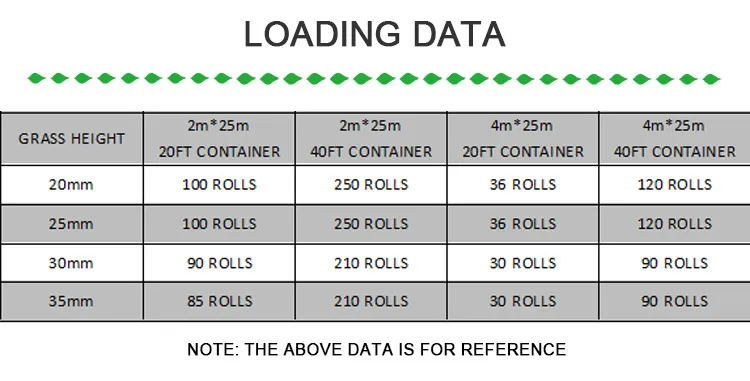
- Afrikaans
- Arabic
- Belarusian
- Bengali
- Czech
- Danish
- Dutch
- English
- Esperanto
- Estonian
- Finnish
- French
- German
- Greek
- Hindi
- Hungarian
- Icelandic
- Indonesian
- irish
- Italian
- Japanese
- kazakh
- Rwandese
- Korean
- Kyrgyz
- Lao
- Latin
- Latvian
- Malay
- Mongolian
- Myanmar
- Norwegian
- Persian
- Polish
- Portuguese
- Romanian
- Russian
- Serbian
- Spanish
- Swedish
- Tagalog
- Tajik
- Thai
- Turkish
- Turkmen
- Ukrainian
- Urdu
- Uighur
- Uzbek
- Vietnamese
Understanding the Costs Involved in Turf Football Field Installation and Maintenance
Nov . 28, 2024 09:58 Back to list
The Cost of Turf Football An Overview
As the popularity of soccer, or football as it is known worldwide, continues to rise, so does the demand for quality playing surfaces. Turf football has emerged as a solution to this need, offering a durable, all-weather alternative to natural grass. However, the cost of installing and maintaining turf fields can vary widely, leading many clubs, schools, and municipalities to weigh the pros and cons before making an investment. It’s crucial to understand the factors that contribute to the cost of turf football and how these systems compare to traditional grass fields.
Initial Installation Costs
The initial installation of a turf field is one of the most significant expenses. On average, the cost can range from $500,000 to over $1 million, depending on the size of the field and the quality of the turf chosen. High-quality turf systems that mimic natural grass are more expensive than basic turf options, which can affect the overall budget. Furthermore, additional expenses such as site preparation, drainage systems, and infill materials will also impact the total cost.
Long-Term Maintenance
While turf fields generally require less maintenance than natural grass, they are not entirely maintenance-free. Costs associated with turf football maintenance can include routine cleaning, infill replenishment, and repairs for damaged sections. On average, the annual maintenance cost for a turf field can range from $20,000 to $40,000. In contrast, natural grass fields require more frequent maintenance, including mowing, watering, fertilization, and pest control, which can easily add up to a similar or even higher annual expense, depending on the region and climate.
Lifespan and Replacement Costs
turf football cost

Turf fields are designed to have a lifespan of about 8 to 10 years, depending on usage and maintenance practices. After this period, they typically require replacement, which can be a significant financial commitment. The cost of replacing a turf field can be similar to the initial installation cost, ranging from $500,000 to $1 million. It’s essential for organizations to plan for this eventuality in their budgets to ensure they can maintain quality playing surfaces for their athletes.
Environmental Considerations
When considering the cost of turf football, it’s also important to factor in environmental implications. While turf fields reduce water usage compared to natural grass, the materials used in turf (such as infill made from rubber or other synthetic products) raise concerns about environmental impact and sustainability. The disposal of old turf can also pose challenges. As awareness grows regarding environmental sustainability, some organizations are exploring eco-friendly alternatives or hybrid models that combine both natural grass and turf.
Community and Economic Impact
The investment in turf football can have far-reaching community impacts. Well-maintained turf fields enable year-round play, increasing accessibility for local schools, sports clubs, and community leagues. This availability not only promotes physical activity but can also drive local economic benefits through events and tournaments that attract visitors.
Conclusion
In summary, the cost of turf football is influenced by various factors, including installation, long-term maintenance, lifespan, and environmental considerations. While the initial investment may be significant, the advantages offered by turf fields, such as reduced water usage and diminished wear and tear, may justify the costs for many organizations. As communities strive to provide quality recreational spaces for their residents, the decision to invest in turf football should be made after careful consideration of all financial, environmental, and social factors. Ultimately, a well-planned investment in turf football can enhance the enjoyment of the sport for players and fans alike, securing its place in the future of community sports.
-
The Benefits of Artificial Turf for Indoors
NewsJul.15,2025
-
How Artificial Grass Suppliers Ensure Quality Products
NewsJul.15,2025
-
Artificial Grass and Pets: A Space for Relaxation
NewsJul.08,2025
-
Balcony & Outdoor Decoration with Artificial Grass
NewsJul.08,2025
-
Best Indoor Artificial Grass for Home
NewsJul.07,2025
-
Best Pet Turf for Dogs: Safe & Durable Artificial Grass Options
NewsJul.07,2025
Products categories









